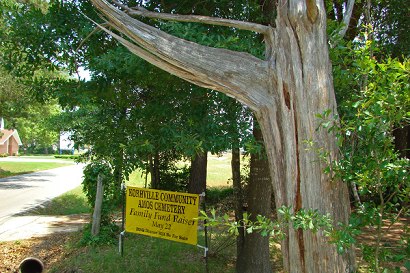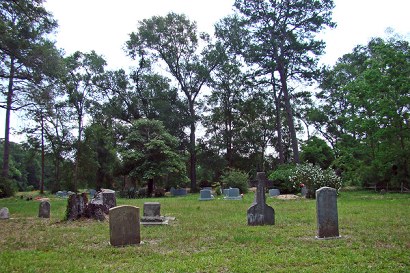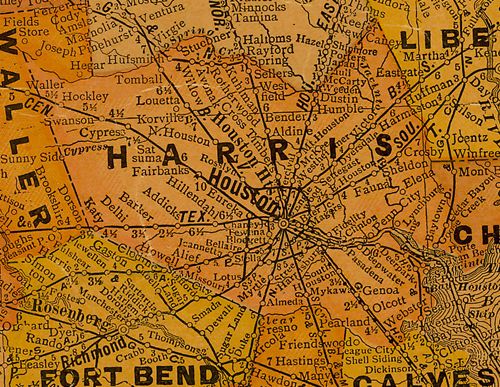Kohrville Texas, aka Korville and Pilotville Texas, Harris County. (original) (raw)

Photographer's Note:
South of Spring-Cypress Road on Huffsmith-Kohrville Road FM2978 are two cemeteries, Amos and Kohrville. The nearby railroad passes through Louetta. FM249 is about equal distance from the cemeteries on the opposite side from the railroad. - Ken Rudine, May 2010
History in a Pecan Shell
A small African-American community near the above mentioned intersection was founded by Freedmen from Alabama in the 1870s. The community's economy was timber-related and the name came from German immigrant Paul Kohrmann, postmaster in 1881.
In the early 1900s another Kohrmann (Agnes Tautenhahn Kohrmann) was operating the community store. About this time the town had a population of fifty. In 1906 a thirty-one pupil, one-teacher school was open. The post office closed in 1911 and mail was rerouted through Hufsmith. Kohrville managed to keep one business in operation in 1940 and the former school became a community center. That same year the town had thirty residents, two churches and two cemeteries.



Harris County 1920s map showing Kohrville as Korville
(Above "A' in 'HARRIS')
Photo courtesy Texas General Land Office
The "Lost" Towns of NW Harris County:
Kohrville | Louetta | North Houston | Satsuma
If these are ghost towns, why are there so many people here?
Although they now only exist as sign names at large intersections (Barker-Cypress, Bammel-North Houston, Aldine-Bender, Alief-Clodine, et. al.). It may surprise non-natives that all of these names once represented once struggling or proudly self-sufficient towns. Even the inside-the-loop street of Crosstimbers was once a separate town.
While most people associate ghost towns with ruins and desolation - these ghosts live among us. Were aisles seven and eight at your local HEB once a syrup mill? Was Radio Shack once a livery stable? Best Buy a cornfield or cotton gin?
Are there unmarked graves under the floor of your favorite Mexican restaurant?
The short answer is this: In many cases these villages were already ghost towns - or so close to being ghost towns that you could hardly tell the difference. Most had their life-blood drained from them after WWII with the migration of rural families to Houston. The phenomenon was statewide. Dallas and Ft. Worth have their fair share of postwar "absorbed" ghost towns - as do smaller cities.
Then "Edge City" happened. The relentless march of strip centers, subdivisions and gated communities overtook these former towns until only the names and cemeteries remained.
While the subject is worthy of further investigation (exactly where is the Lily White cemetery behind Memorial City Shopping Center?), we're happy to include this topic, made possible by generous grant of time, sweat and reseach by the Team Rudine.
- Editor
"15 Minutes of Separation"
May 12, 2010 column
Texas Escapes, in its purpose to preserve historic, endangered and vanishing Texas, asks that anyone wishing to share their local history, stories, landmarks and recent or vintage photos, please contact us.
